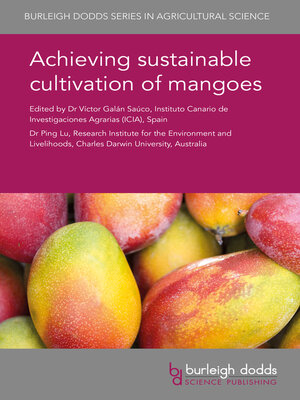Achieving sustainable cultivation of mangoes
ebook ∣ Burleigh Dodds Series in Agricultural Science
By Dr Victor Galán Saúco

Sign up to save your library
With an OverDrive account, you can save your favorite libraries for at-a-glance information about availability. Find out more about OverDrive accounts.
Find this title in Libby, the library reading app by OverDrive.



Search for a digital library with this title
Title found at these libraries:
| Library Name | Distance |
|---|---|
| Loading... |
"The book provides an excellent overview of mango cultivation across the world... a comprehensive foundation of knowledge on which future research strategies can be built."
Chronica Horticulturae
Mangoes are one of the most important and widely-cultivated fruits in tropical as well as sub-tropical regions. There have been a number of recent developments with the potential to improve crop yields and quality. There has been new research in understanding the physiology of tree and fruit development with implications for both breeding and cultivation. Analysis of the mango genome promises new, faster breeding techniques to develop improved cultivars. These and other advances are helping to tackle diseases and pests which still cause significant losses.
Drawing on an international range of expertise, this collection focuses on ways of improving the cultivation of mango as a food crop at each step in the value chain, from breeding through to post-harvest storage. Part 1 discusses advances in understanding tree growth, flowering, pollination and fruit development as well as developments in marker-assisted breeding. Part 2 reviews improvements in cultivation practice, including organic and greenhouse cultivation. Part 3 covers post-harvest management and quality, whilst the final part of the book assesses disease and pest management.
As the need for more interdisciplinary and collaborative research increases, this collection will be a standard reference for the mango research community by summarising key research trends in each topic and putting them in the context of mango cultivation as a whole.







